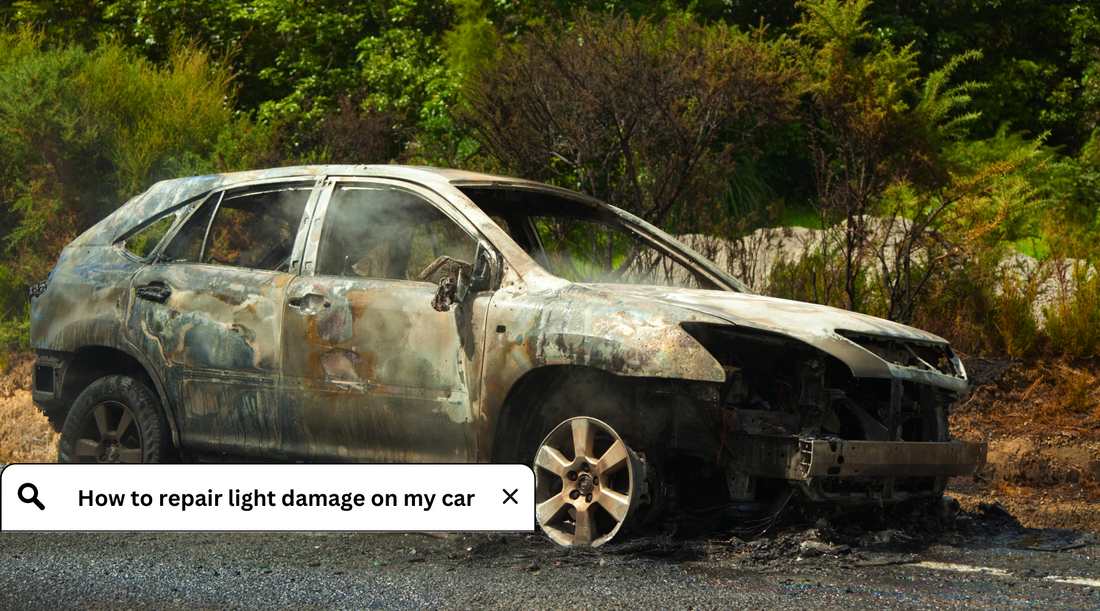
Cat N Vs Cat S vehicles. What's the difference and what does it mean.
Share
You may not recognise the phrases Cat N and Cat S which is completely understandable. However, you probably have heard a car being described as a 'Cat C' and 'Cat D', right?
Back in October 2017, they were changed around just to confuse everyone. So, to break it down we can broadly define them as follows:
Cat C = Cat S Cat D = Cat N
Unfortunately, it isn't quite that simple. This isn’t just a swap in letters, there have been a couple of minor tweaks for each of the categories. They're close to the old Cat C/D categories but the newer system was introduced in an effort to make categorisation easier and to better reflect the damage a vehicle had sustained.
Although this will be an easy change for some people to understand, we are fully aware that there will be others reading this thinking, “why are we talking about cats, I'm more of a dog person”. No need to stress, in this blog we’re going to break down the Cat N and Cat S write-off categories used for cars and what they mean when it comes to buying a car.
Are you ready? Let’s go…
When a car is being sold, whether that is privately or through a garage, it should always have all cards on the table when it comes to the vehicle's history. This includes any damage that the car in question might have suffered and any accidents it may have been involved in.
When a car is involved in an accident and/or incurs some damage, it automatically gets associated with a Category (or 'Cat'). There are four different types of categories; namely A, B, N and S. We're going to focus on discussing Cat N and S here. But for information purposes, Cat A and B are classed as 'total loss write-offs'. Cat B vehicles may be used as 'breakers' and salvaged for parts. Neither a Cat A, nor a Cat B vehicle can ever be put back on the road legally.

An easy way to remember it is N=Non-Structural and S=Structural.
Both Cat N and Cat S are insurance categories given to vehicles when the cost of repairs is more than the value of the car. They either can be, or have already been repaired and meet the standards to be road legal.
A key difference between these two categories is that Cat S cars need to be inspected and re-registered with DVLA once repaired before they can go back on the road. If you’re buying a car that is labelled as Cat S, make sure you check this before you decide to buy it.
Let's look at an example; you have a 2004 reg BMW Z4 which is in pristine condition. Someone reversed into it and made a fairly large dent in the back panel from the impact. If you were to go through your insurance company to get it repaired, it would be classed as a Cat N vehicle in DVLA’s books. Something to note; if you go to your insurer just to ask for advice, they will count this as a claim, even if you choose not to follow through with it. This is important to note when it comes to searching for future insurance quotes as you need to declare this. You should tell future insurers that you never followed through with the claim and there was no payout for it.
If you go through your insurer then you have a few options. You can 'sell' the car to your insurance company and they'll give you the value of the car minus your excess. This scenario is where a lot of the category vehicles come from on auction sites. Alternatively, you can choose to keep your precious vehicle. In this scenario you'd receive a payout from your insurer minus the vehicle's salvage value. It's important to note that this can be a real kick in the teeth as the insurer determines these figures based on the car's value which may mean you're left with very little in the way of a pay out (not to mention damage to your pride and joy). Another option is to have your insurer repair it. This is likely the most obvious and well known path for people when putting in claims.
Unfortunately, all three of these options will result in a category being listed against the car. However, if you repair it yourself then it won’t. This is especially helpful for older vehicles with low intrinsic value but high sentimental value. Going back to the '04 BMW above, if you could find a panel in the correct colour then it might be worth just buying it and replacing the old one yourself, especially since older vehicles tend to have bolt-on body panels. New panels like this usually cost a few hundred pounds instead of the couple of grand body shops would charge.
Here are six of the most common types of damage that may result in a Cat N:
- Panel damage & paintwork issues
- Missing or damaged wing mirrors
- Windscreen cracks & chips
- Smashed or non-functioning headlights or rear lights
- Electrical issues
- Damaged wheels or tyres
When you break it down like this, the damages that cause a car to be listed as Cat N aren’t really all that bad.
Cat S, however, is a slightly different kettle of fish.
As we mentioned above, Cat S stands for Structural meaning the damage is more severe. This doesn’t mean that the car is irreparable though.
Here are some of the common causes of Cat S damage:
- Crumpled chassis
- Cracked or corroded sills
- Fractured cant rail or header rails
- Collapsed or dented wheel housing extension
- Cracked bulkhead
- Crushed crossmembers
- Snapped wings or wing support
- Twisted A-post and/or B-post
We wouldn’t dismiss looking at or buying a vehicle that comes under Cat N or Cat S as they may be just as good as any other car on the road. Our advice, do your research, take it for a test drive, and get an insurance quote. Categorised vehicles may incur higher premiums from insurance companies so we’d recommend you weigh this up against any potential savings that you may be making on purchasing the vehicle.
So, these categories sound serious and maybe a tad scary but we promise you they’re not. Cat N and Cat S cars should be just as safe to buy and drive as a car that isn’t Cat listed. The main word here is should. Since Cat S vehicles need to be inspected before being deemed roadworthy, and Cat N vehicles have theoretically only sustained cosmetic damage, a car with either classification should be perfectly safe to drive. However, it's important you do your own research and due diligence before purchasing one.
Useful links for your bookmarks:
https://www.gov.uk/checks-when-buying-a-used-car
https://www.gov.uk/check-mot-history
https://www.theaacarcheck.com/
https://www.autotrader.co.uk/cars/vehicle-check
Sources
https://www.raw2k.co.uk/news/the-6-most-common-types-of-damage-on-category-n-cars
https://www.scrapcarcomparison.co.uk/blog/what-is-cat-s-damage/
Legal disclaimer: This written piece is meant for educational purpose only, and is not intended to be used solely during the purchasing of any of the vehicles. It's important you do your own research on a vehicle, including, but not limited to conducting an MOT check, visual inspections, test drives, consulting mechanics, history checks etc. Octane Apparel Co will not be held responsible or liable for the purchase of vehicles using the above information.
